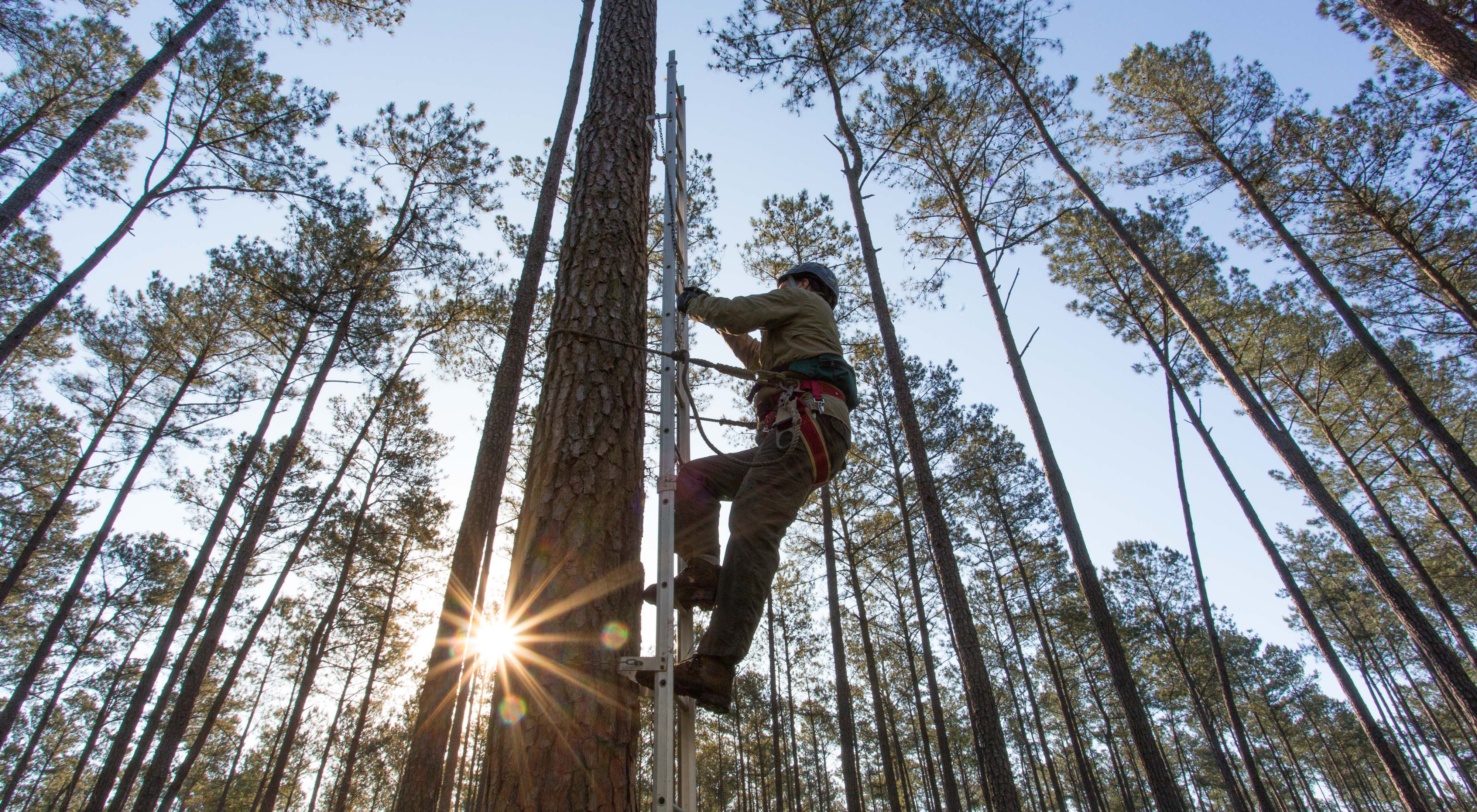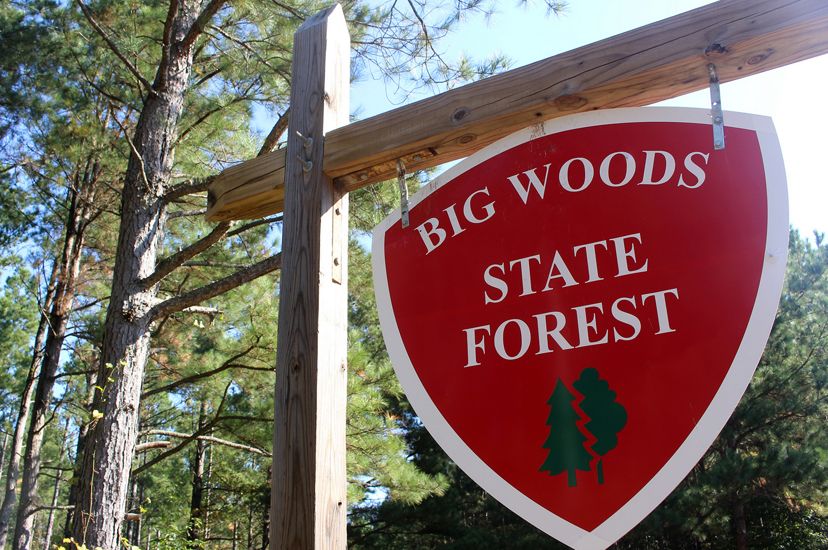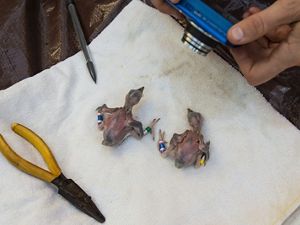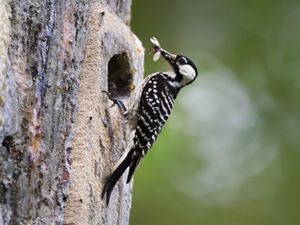Red Cockaded Woodpecker Recovery
Writing a new page in the recovery story of Virginia's rarest bird.
Virginia’s red-cockaded woodpecker population barely exceeded double digits when The Nature Conservancy acquired the birds’ home in late 1998 to establish Piney Grove Preserve. Twenty years later, investments in the recovery of this endangered bird and its iconic forest habitat are paying off in new milestones.
On the morning of May 16, 2019, representatives from TNC, the Virginia Department of Wildlife Resources (DWR) and the Center for Conservation Biology (CCB) at William & Mary hiked into a cluster of widely spaced pines. Their objective: band the first red-cockaded woodpecker chicks to hatch within the Big Woods Wildlife Management Area.

To reach the nestlings, CCB Director Dr. Bryan Watts climbed nearly four stories using specially designed connecting ladders. The six-day-old chicks lay snuggled at the bottom of their cozy nest cavity, which their parents had carved into a living tree.
With Piney Grove running out of real estate for starter homes—each breeding group needs about 200 acres for foraging—the young pair set up housekeeping in the wide-open suburbs of Big Woods.
As Dr. Watts gently retrieved the nestlings for banding, “excited chatter abruptly gave way to reverential silence,” DWR's Sergio Harding writes in his account of the event. “All present understood the significance of this moment and maintained their silent focus as the birds were brought down to the ground and the banding proceeded.”
Quote
Excited chatter abruptly gave way to reverential silence ... All present understood the significance of this moment.

For Brian van Eerden, director of TNC’s Virginia Pinelands program, the significance is a real-life fulfillment of the maxim from Field of Dreams: “If you build it, they will come.”
“In less than a decade,” Brian says, “our partners at DWR turned an industrial timberland into a Southern pine forest healthy enough to support not only a new generation of woodpeckers, but also hundreds of other plants and animals that rely on this now globally rare habitat.”
Getting to this point required major investments in property and in people. In 2006, TNC and The Conservation Fund completed a landmark transaction with International Paper to acquire more than 200,000 acres across the South. Then, in 2010, the state acquired almost 4,500 acres of the Virginia portion from TNC to create Big Woods Wildlife Management Area and State Forest along the southern boundary of Piney Grove.
But that dividing line exists primarily on maps. Striving for seamless management, TNC, the state and other partners pool resources and collaborate on the ground, especially on controlled burns.
Pine savannas are a fire-dependent habitat. Repeated burning is required to mimic nature’s construction methods over the many centuries that these forests and red-cockaded woodpeckers evolved together.
The birth announcement from Big Woods follows similar good news from Great Dismal Swamp National Wildlife Refuge in 2017, when Dr. Watts banded the first two nestlings to hatch there in at least 40 years. TNC helped install nest cavities at the refuge to facilitate the ongoing introduction of birds from larger populations in the Carolinas.




